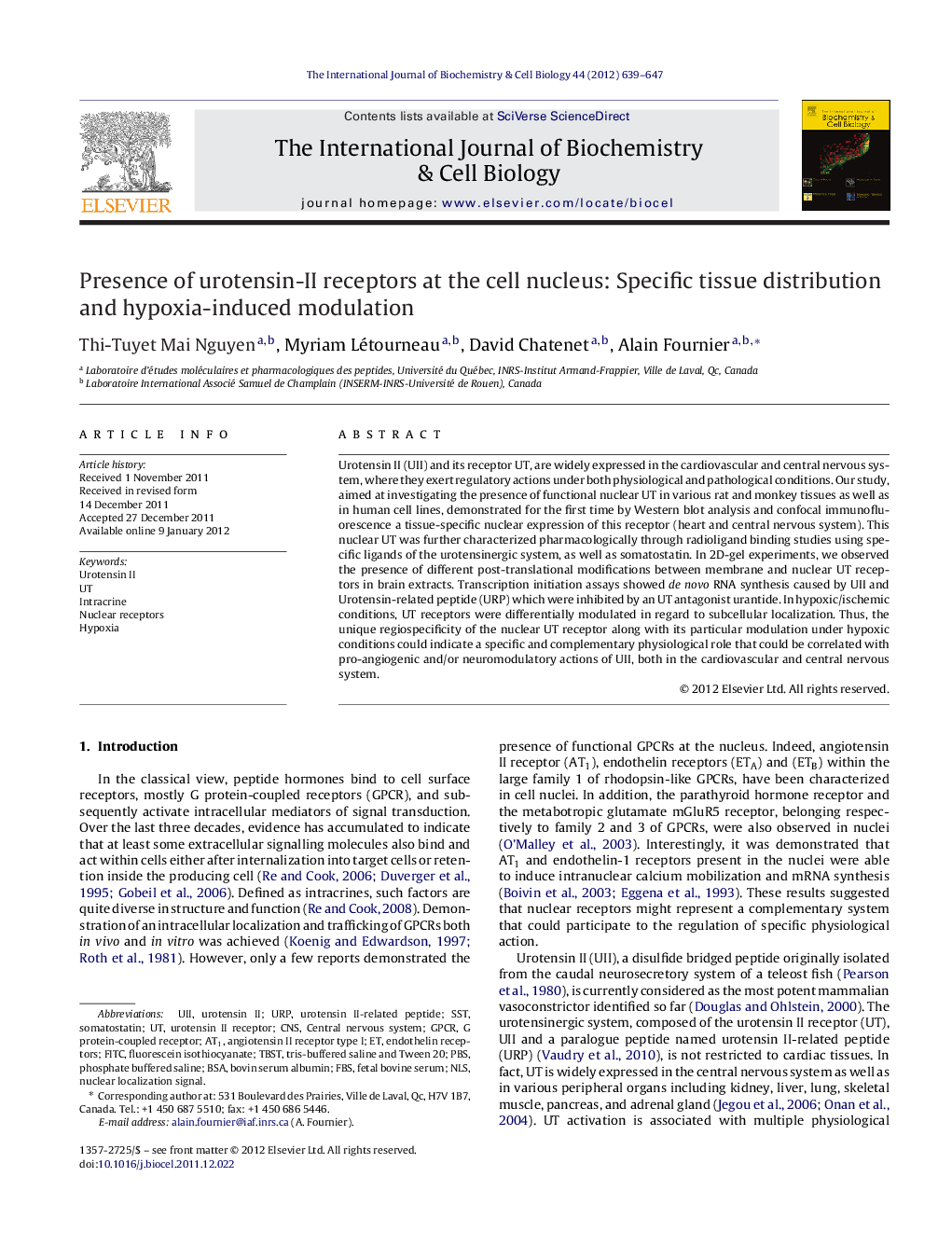| Article ID | Journal | Published Year | Pages | File Type |
|---|---|---|---|---|
| 1983869 | The International Journal of Biochemistry & Cell Biology | 2012 | 9 Pages |
Urotensin II (UII) and its receptor UT, are widely expressed in the cardiovascular and central nervous system, where they exert regulatory actions under both physiological and pathological conditions. Our study, aimed at investigating the presence of functional nuclear UT in various rat and monkey tissues as well as in human cell lines, demonstrated for the first time by Western blot analysis and confocal immunofluorescence a tissue-specific nuclear expression of this receptor (heart and central nervous system). This nuclear UT was further characterized pharmacologically through radioligand binding studies using specific ligands of the urotensinergic system, as well as somatostatin. In 2D-gel experiments, we observed the presence of different post-translational modifications between membrane and nuclear UT receptors in brain extracts. Transcription initiation assays showed de novo RNA synthesis caused by UII and Urotensin-related peptide (URP) which were inhibited by an UT antagonist urantide. In hypoxic/ischemic conditions, UT receptors were differentially modulated in regard to subcellular localization. Thus, the unique regiospecificity of the nuclear UT receptor along with its particular modulation under hypoxic conditions could indicate a specific and complementary physiological role that could be correlated with pro-angiogenic and/or neuromodulatory actions of UII, both in the cardiovascular and central nervous system.
